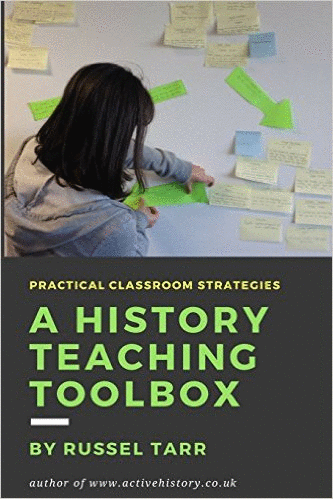World History teaching resources for the high school classroom: lesson plans, worksheets, quizzes and simulation games for KS3, IGCSE, IB and A-Level teachers.
Hexagon Learning Case Study: The Rise of Stalin
The ability to select, prioritise, categorise and link evidence is a valuable skill that students learn in History. It is also highly transferable to other subjects.
Using hexagons is a simple and effective way of developing these skills, as the following case study seeks to demonstrate.
Historical Context
How Stalin was able to emerge as leader of the USSR against apparently overwhelming odds is one of the most intriguing questions which we study at IB Level. In the years that following the Bolshevik Revolution, due to a series of blunders and miscalculations, Stalin had lost the support of the party leadership: so much so that on his deathbed, Lenin dictated a formal 'Testament' describing Stalin as a liability who needed to be removed from his post. He was also hated by Lenin's closest ally, Leon Trotsky, who was widely expected to step into the leadership position after Lenin's death. Yet just five years later Stalin was undisputed leader of the USSR and Trotsky was in exile.
The story of how Stalin transformed his fortunes so dramatically is a great story revolving around Stalin's treachery, cunning and downright charm. But the danger of this is that the essays that are then written become mere narrative, storybook accounts which do little more than provide a step-by-step account of the main events between 1924-1929.
The Hexagon Approach
After a study of the events culminating in Stalin emerging as leader of the party, I made a list of factors which could be used to explain why Stalin became dictator of the USSR. I then put these into the Classtools.net Hexagons Generator to create two single-page documents containing a total of 40 hexagons.
Stage 1: Selection and Categorisation
 The class was divided into pairs for the activity. Each pair of students was given a copy of the first sheet of hexagons, which they cut up and started to organise on their desks into categories of their choice. This process, involving the categorisation of 25 hexagons, took about 20 minutes. Students were encouraged to come up with no more than five categories overall. They could also choose to leave some of the hexagons to one side if they were considered less important than the others.
The class was divided into pairs for the activity. Each pair of students was given a copy of the first sheet of hexagons, which they cut up and started to organise on their desks into categories of their choice. This process, involving the categorisation of 25 hexagons, took about 20 minutes. Students were encouraged to come up with no more than five categories overall. They could also choose to leave some of the hexagons to one side if they were considered less important than the others.
We then spent five minutes comparing the different categories that students had identified. Each pair of students took turns to suggest one idea for a category heading until all the ideas had been shared.
Following this, I gave each students a blank sheet of hexagons. The challenge was to identify other factors which could help to explain Stalin's rise to power and write these directly into the hexagons. After five minutes, each pair of students took it in turns to suggest an idea. If this was a valid (and fresh) idea, then the other students copied it into their pair's version of the sheet, and the students who shared the idea were each given a sweet (we had a bag of these left over as a result of our 'Rise of Stalin through sweet-eating' lesson which had preceded this lesson!). This process was repeated until the students had run out of ideas.
Each pair of students then cut up this new sheet of factors and used them to develop their existing diagrams. In some instances this involved merely adding fresh evidence into existing categories. Sometimes though it involved adding new categories, or amending earlier categories.
Finally, each pair of students was given the second sheet of hexagons and the process of categorisation continued.
Stage 2: Linkage and Prioritisation
By this stage, the students had decided upon the main factors to explain Stalin's rise to power, organised into key categories. Each of these categories could form the basis of a paragraph in an essay. However, it was still necessary to decide two things.
 Firstly, students would need to decide in which order to deal with the points in each paragraph. It would not be enough to simply introduce the category title, then randomly write about each piece of evidence from the hexagons in that group. This is where the hexagons are particularly useful. The six sides mean that factors can be placed alongside each other in various combinations to highlight connections between batches of factors within categories. After students rearranged their factors in this way, they stuck them down onto sugar paper with a glue stick. They could then write the title of each category over each batch of hexagons, and annotate around each group of hexagons to explain why they were arranged in that particulary way.
Firstly, students would need to decide in which order to deal with the points in each paragraph. It would not be enough to simply introduce the category title, then randomly write about each piece of evidence from the hexagons in that group. This is where the hexagons are particularly useful. The six sides mean that factors can be placed alongside each other in various combinations to highlight connections between batches of factors within categories. After students rearranged their factors in this way, they stuck them down onto sugar paper with a glue stick. They could then write the title of each category over each batch of hexagons, and annotate around each group of hexagons to explain why they were arranged in that particulary way.
Secondly, students had to decide how to connect their main categories together to create an overall thread of argument. They did this by drawing arrows between the factors and explaining their connections over them. For example:
"Economic problems in the country > created > Divisions in the party > exploited by > Stalin's Cunning"
Stage 3: Essay preparation
The final part of the process was to use the completed diagrams as an essay plan. I photographed each of the diagrams and shared them with the students. Their task was to use the diagrams as the basis of their essay on "Why did Stalin become leader of the USSR?". Each paragraph was to focus on separate categories of hexagons, and the points made in each paragraph should have some logical order and 'flow'. Moreover, the order of the paragraphs should be dictated by the arrows linking the categories, with the opening sentence of each paragraph after the first one being based on the explanation over each arrow.
 Reflections and Conclusions
Reflections and Conclusions
The 'Hexagon Approach' worked very well. It steered students away from a narrative approach and into an analytical frame of mind. It helped them frame categories of analyis, build up their command of the material step-by-step. It provided them with the opportunity to easily change their initial assumptions, connect factors together both within and between categories, and give them a very effective basis of an accomplished written piece.
It is also a very simple approach that can be transferred to other topics and other curriculum subjects. All that is needed is an initial list of factors - contributed either by the teacher or the students - which can then be written into a blank hexagons template or turned into hexagons automatically using the Classtools.net Hexagons Generator. Thereafter, all that is needed is a pair of scissors, some sugar paper and a glue stick. And, ideally, a bag of sweets!

© 1998-2026 Russel Tarr, ActiveHistory.co.uk Limited (Reg. 6111680)
1 Torrin Drive, Shrewsbury, Shropshire, SY3 6AW, England
Privacy Policy | Contact






